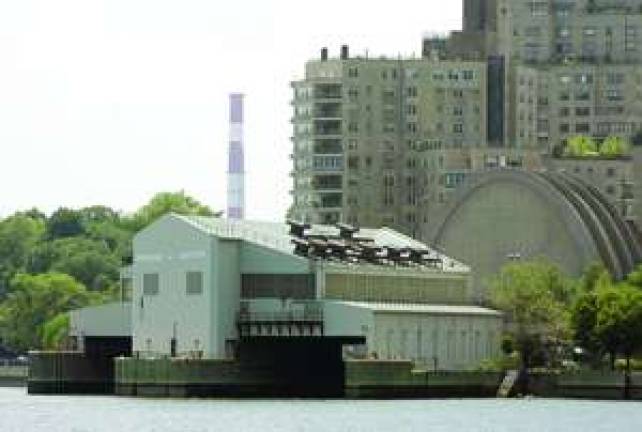Locals Saying Hurricane Sandy Shows 91st Street Dump Not Safe

Opponents of the recently approved East 91st Street Waste Transfer Station have a new weapon in their ongoing battle against the 10-story, $240 million project: Hurricane Sandy. The flooding that surged from the East River all the way to Second Avenue between 91st and 96th streets during the Oct. 29 storm, they argue, provides tangible evidence that the station could do more harm than good. According to Assemblyman Micah Kellner, in light of the storm, the transfer station's susceptibility to flooding "is no longer a theory, it's a reality." Kellner partnered with various Upper East Side advocacy groups in June to file suit against Mayor Michael Bloomberg, the city Department of Sanitation and the state Department of Environmental Conservation to prevent the station's construction on a small piece of land that juts out into the East River at the east end of East 91st Street, beyond FDR Drive. Kellner's concern is the environmental impact on the homes and parks surrounding the approved site, and he told Our Town that floodwater from a storm of Sandy's proportions could push trash deep into the Upper East Side and cause severe pollution. Asbjorn Finsnes, the executive director of Residents for Sane Trash Solutions, a volunteer advocacy group that partnered with Kellner in filing the lawsuit, agreed. "Imagine all the toxic materials that would flow into the streets," he said. "All these chemicals would flow in and pollute the community." Additionally, he said, garbage would spill into the East River. The transfer station proposal was originally passed as part of the city's Solid Waste Management Plan in 2006. The overhaul of the city's waste management was intended to reduce garbage-truck emissions and street traffic by allowing more trash to be moved by barges, a point that proponents reference when arguing in favor of the new station at East 91st Street. The proposal also passed muster with the U.S. Army Corps of Engineers, which evaluated the infrastructure and potential changes to the East River environment, though not without falling under criticism from the likes of Rep. Carolyn Maloney for not taking the full impact into account. The potential to reduce overall pollution and the purported state-of-the-art technology that will go into the new station have led some politicians in favor of it to take opponents' environmental objections with a grain of salt. Though the station may increase garbage-truck traffic-and could conceivably decrease the property values for homes-in Yorkville, proponents of the station such as Councilwoman Melissa Mark-Viverito argue that locals need to bear their share of the burden of waste management. Finsnes and Kellner argue, though, that the station's expected benefits of course presume that the station would not be ruined in a storm-and after Sandy, they say, there is no guarantee of that. "I'm not sure that there can be reliable predictions about flooding when the flood of the century comes every 16 months now," Kellner said. "The old standards can't apply. They clearly don't protect community." He referenced an oil spill at 200 East End Avenue and flooding at 535 E. 78th St., consequences of the storm that were not anticipated. "There were effects that no one saw coming," he said. Finsnes, too, said the storm revealed faults in the transfer station's design, such as its intended 6-inch elevation above the city's 100-year flood level. "The whole plan is already outdated before it is implemented," he asserted, citing climate change-and consequent raised sea levels and more frequent storms-as a confounding variable the plan failed to factor in. "This is not NIMBY [not in my backyard]," Finsnes said. "This is about what's right and wrong."